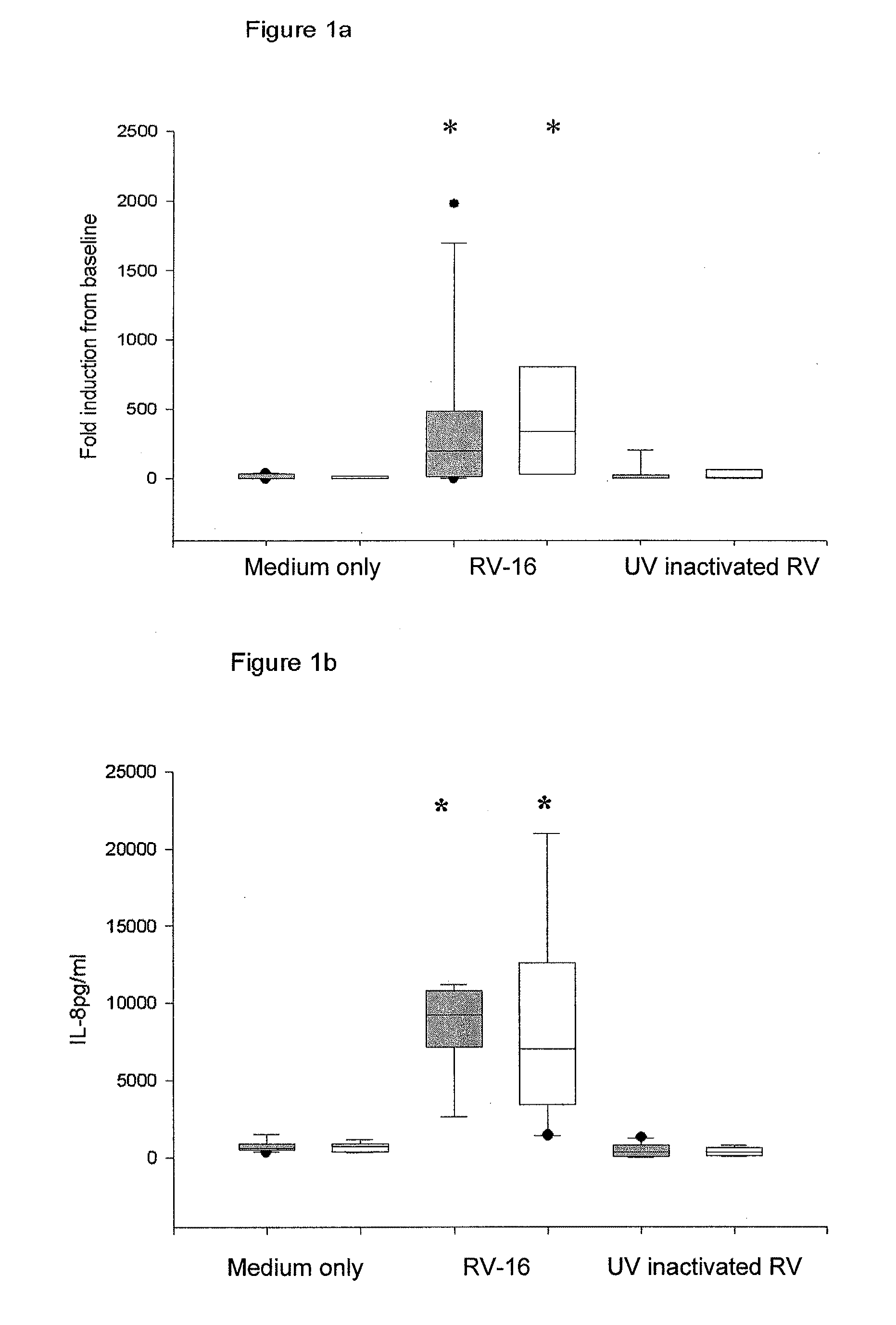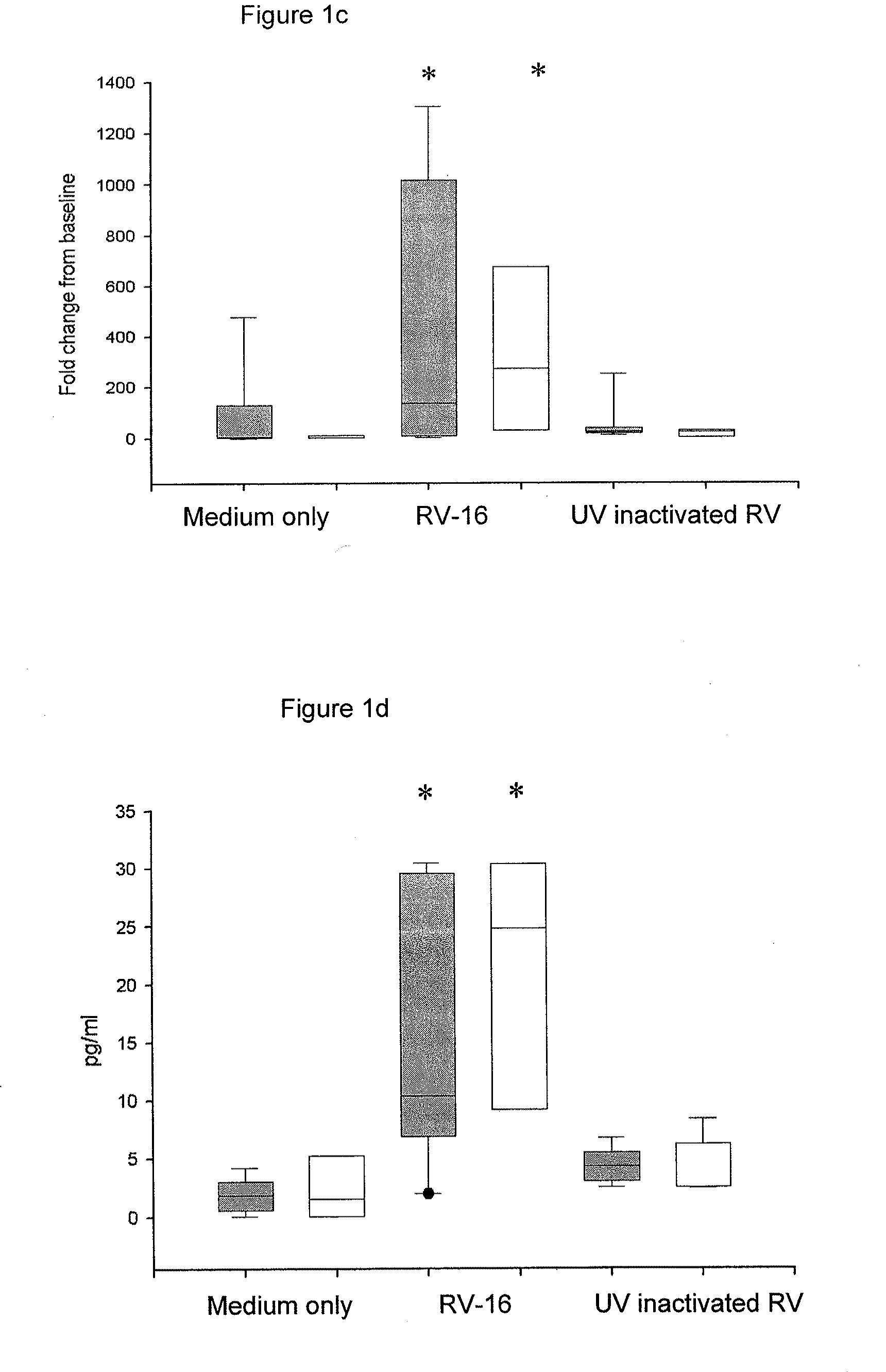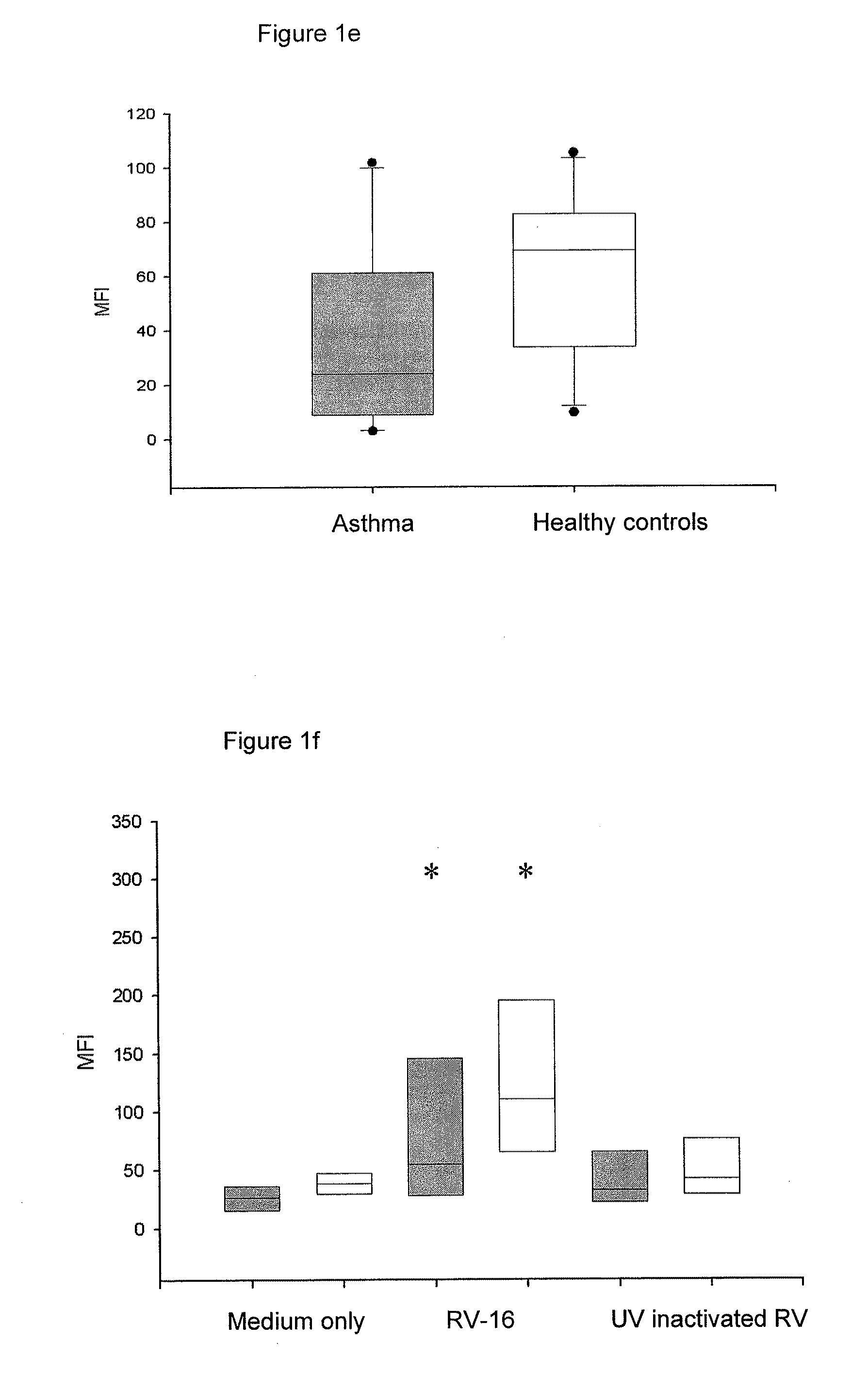Anti-virus therapy for respiratory diseases
a technology for respiratory diseases and anti-viruses, applied in the direction of immunological disorders, aerosol delivery, peptide/protein ingredients, etc., can solve the problems of inability to extrapolate, inability to protect against any natural respiratory virus infection in humans, and increased virion production compared to healthy people, etc., to achieve low risk, prevent asthma, and high exposure
- Summary
- Abstract
- Description
- Claims
- Application Information
AI Technical Summary
Benefits of technology
Problems solved by technology
Method used
Image
Examples
example 2
Study of Bronchial Epithelial Cells from COPD Patients
[0218]Chronic obstructive pulmonary disease is another example of an inflammatory airways disease in which the common cold virus causes exacerbations (Seemungal T A, Harper-Owen R, Bhowmik A, Jeffries D J, Wedzicha J A. Detection of rhinovirus in induced sputum at exacerbation of chronic obstructive pulmonary disease. Eur Respir J. (2000) 16, 677-83)_with those affected frequently requiring_hospitalization (MacNee W. Acute exacerbations of COPD. Swiss Med. Wkly. (2003) May 3; 133 (17-18):247-57). Based on the finding that bronchial epithelial cells from asthmatic subjects have a defective Type I interferon response, it was postulated that a similar deficiency in COPD could also explain the severity of lower respiratory tract symptoms in this group of patients. To investigate this possibility, archival samples of cultured bronchial epithelial cells were tested for their response to RV-16 infection. These cells were grown from bron...
example 3
Rhinovirus Induces IFN-λs in Bronchial Epithelial Cells
[0223]Aim:
[0224]Investigate whether RV induces IFN-λs in vitro and whether IFN-λs induce antiviral activity against RV infection in bronchial epithelial cells.
[0225]Outline of Methods:
[0226]The human bronchial epithelial cell-line BEAS2B was infected with RV. TaqMan® PCR was used to identify IFN-λs mRNA expression and a bioassay was employed for corresponding protein production. BEAS2B cells were treated for 24 h with different doses of IFN-λ1 before infection with RV. Both TaqMan® PCR for viral RNA in cell lysates and viral titration of the BEAS2B supernatant were performed to investigate the antiviral effect.
Results:
[0227]IFN-λ1, IFN-λ2 and IFN-λ3 mRNA was increased after 4 h (p<0.05) and peaked at 8 h post-infection (p<0.001). The increase was demonstrated to be dose-responsive to RV-16 at 24 h post-infection (p<0.001). Infection with RV-9 and RV-1B demonstrated that the response was serotype and receptor independent. UV-inac...
example 4
Viral Infection in Asthma Exacerbations: Role of Interferon Lambda
[0230]Aim:
[0231]Investigate whether RV16 induces IFN-λs and if this production is associated with increased susceptibility to rhinovirus infections in asthmatics.
[0232]Methods:
[0233]The human bronchial epithelial cell-line BEAS2B and bronchial primary cells from asthmatics (6) and normal patients (5) were infected with RV16. TaqMan® PCR for IFN-λ mRNA expression was used. BEAS2B cells were treated with IFN-λ1 before infection with RV16. Both TaqMan® PCR for viral RNA in cell lysates and viral titration of the BEAS2B supernatant were performed to investigate the antiviral effect. TaqMan® PCR for viral RNA in cell lysates of primary cells was used also to test weather RV16 infectivity was different between primary cells from asthmatics and normals.
[0234]IFN-λs in increasing susceptibility to rhinovirus infections in asthmatics. Results: IFN-λs mRNA was increased both in BEAS2B and in primary cells with the peak at 8 h i...
PUM
 Login to View More
Login to View More Abstract
Description
Claims
Application Information
 Login to View More
Login to View More - R&D
- Intellectual Property
- Life Sciences
- Materials
- Tech Scout
- Unparalleled Data Quality
- Higher Quality Content
- 60% Fewer Hallucinations
Browse by: Latest US Patents, China's latest patents, Technical Efficacy Thesaurus, Application Domain, Technology Topic, Popular Technical Reports.
© 2025 PatSnap. All rights reserved.Legal|Privacy policy|Modern Slavery Act Transparency Statement|Sitemap|About US| Contact US: help@patsnap.com



